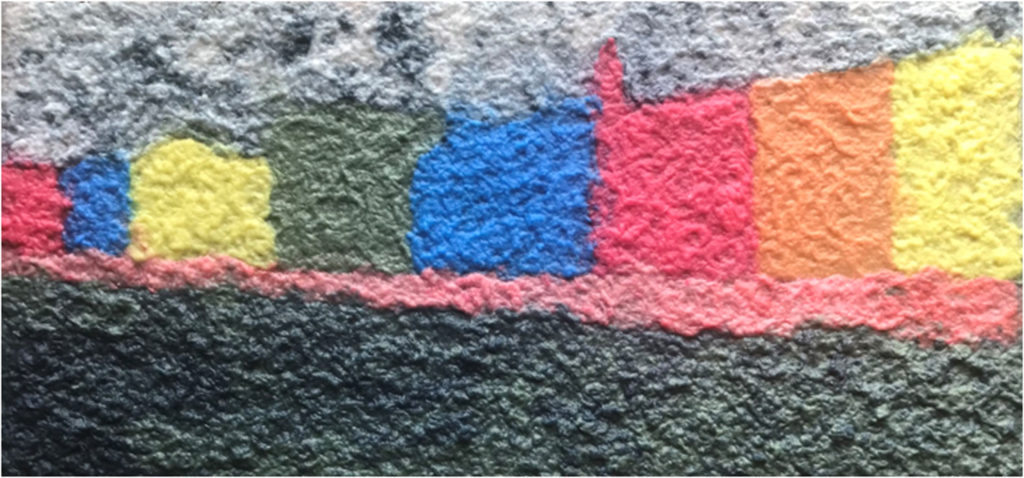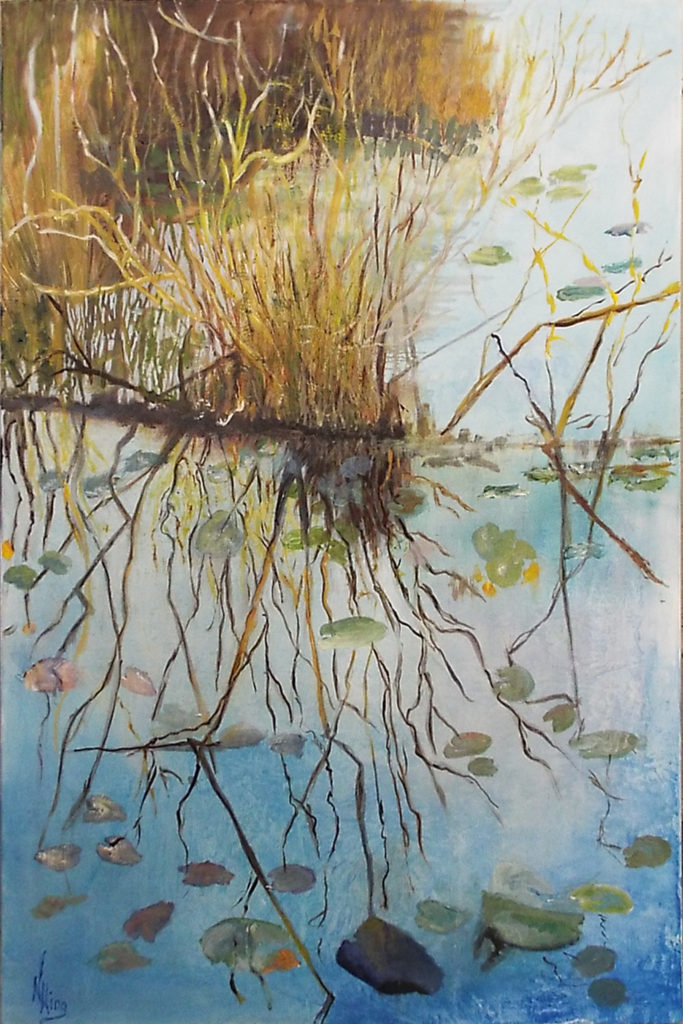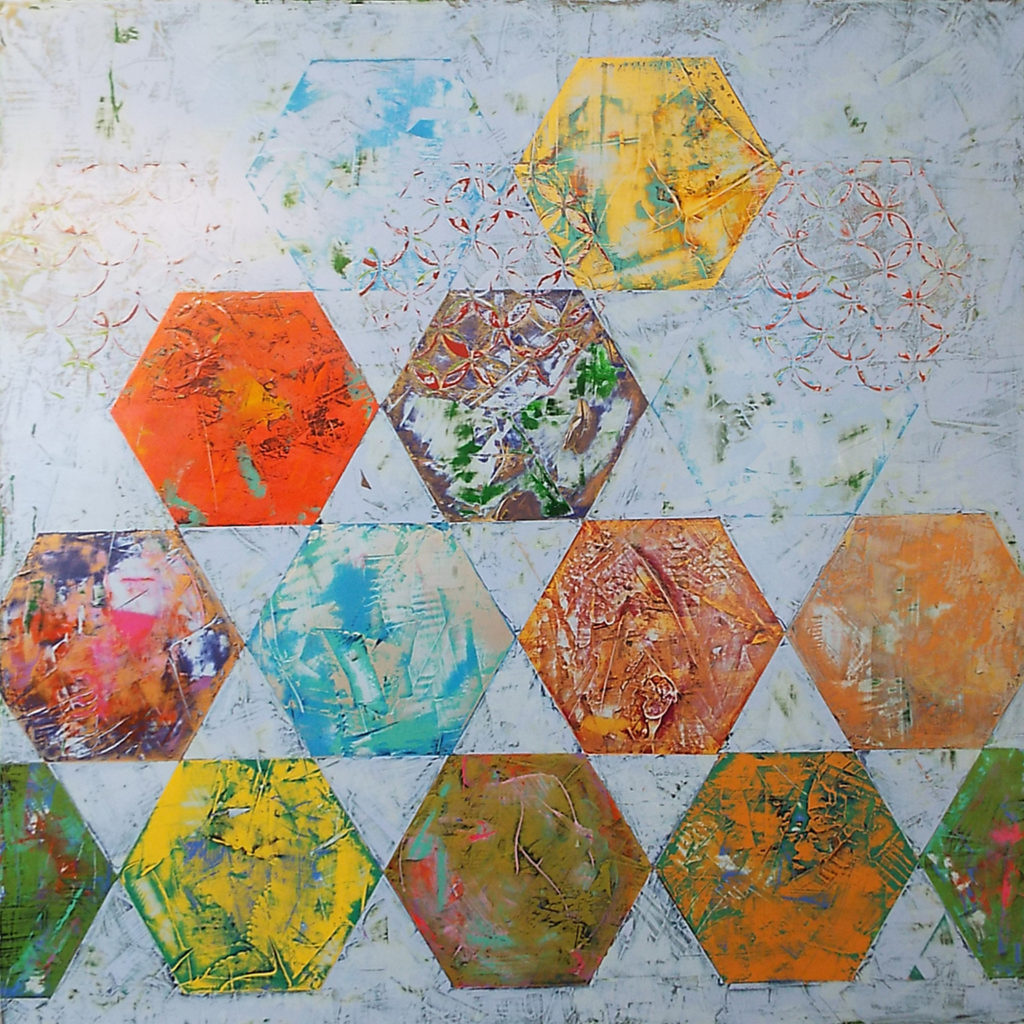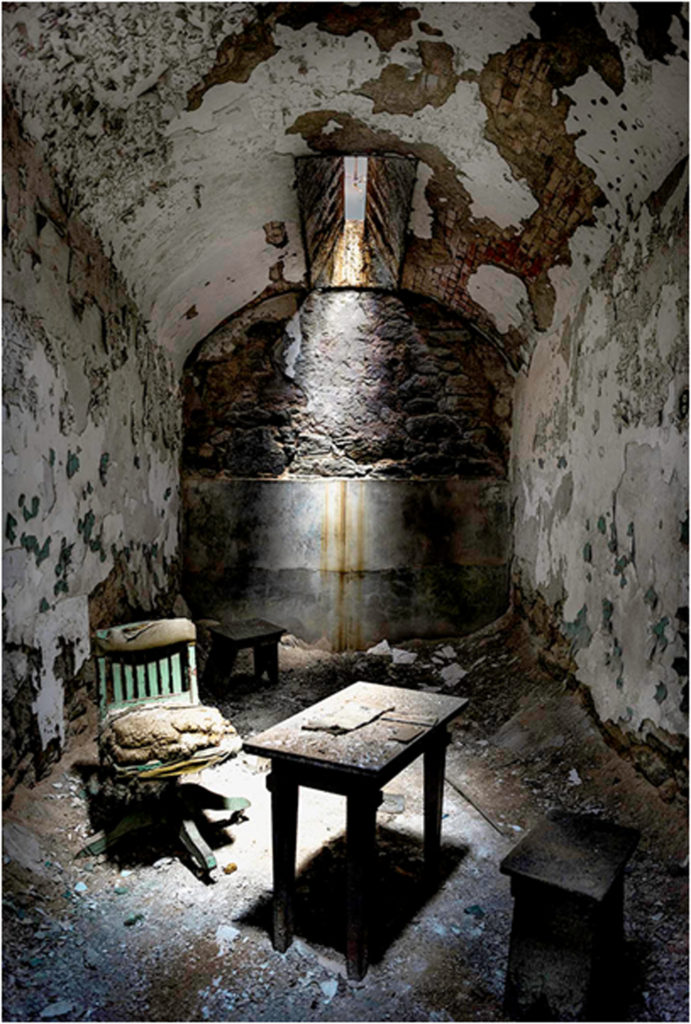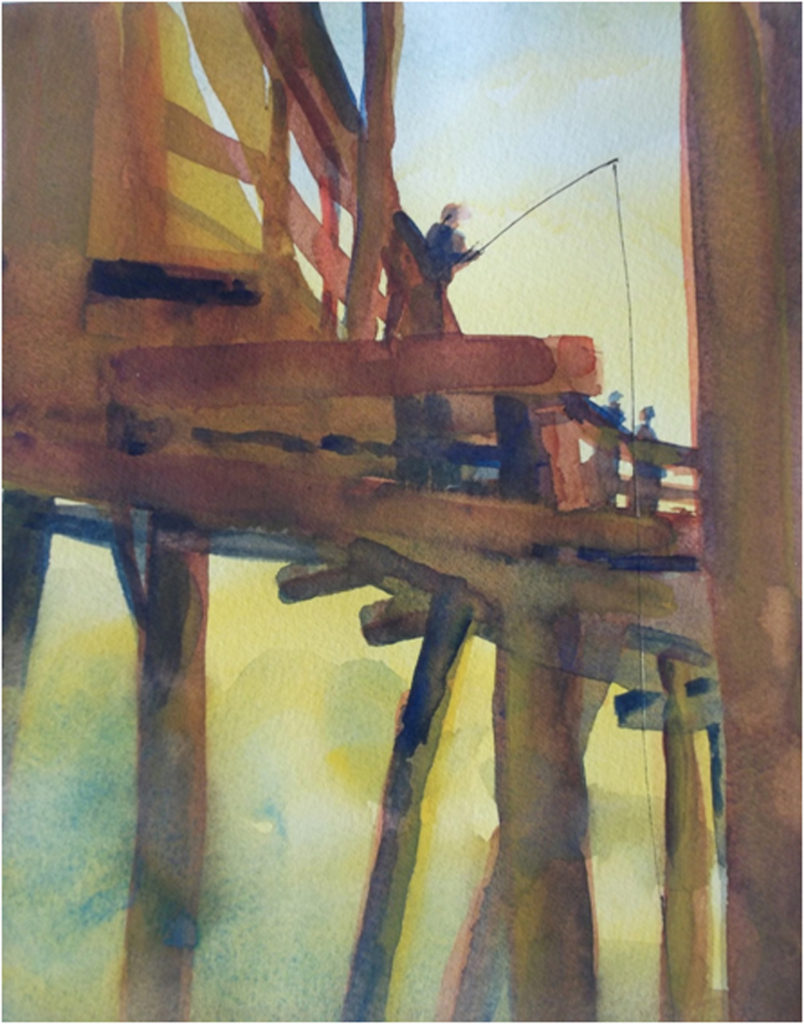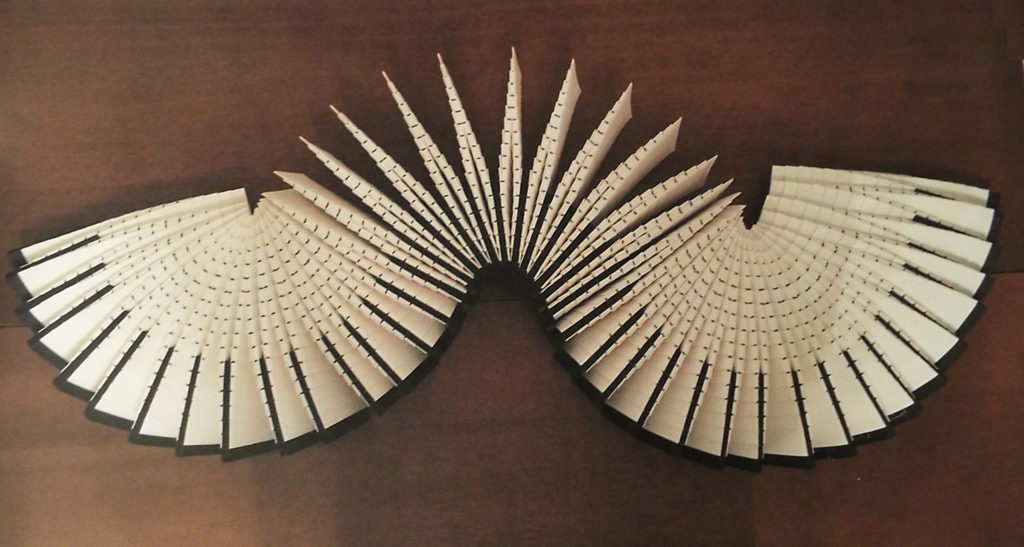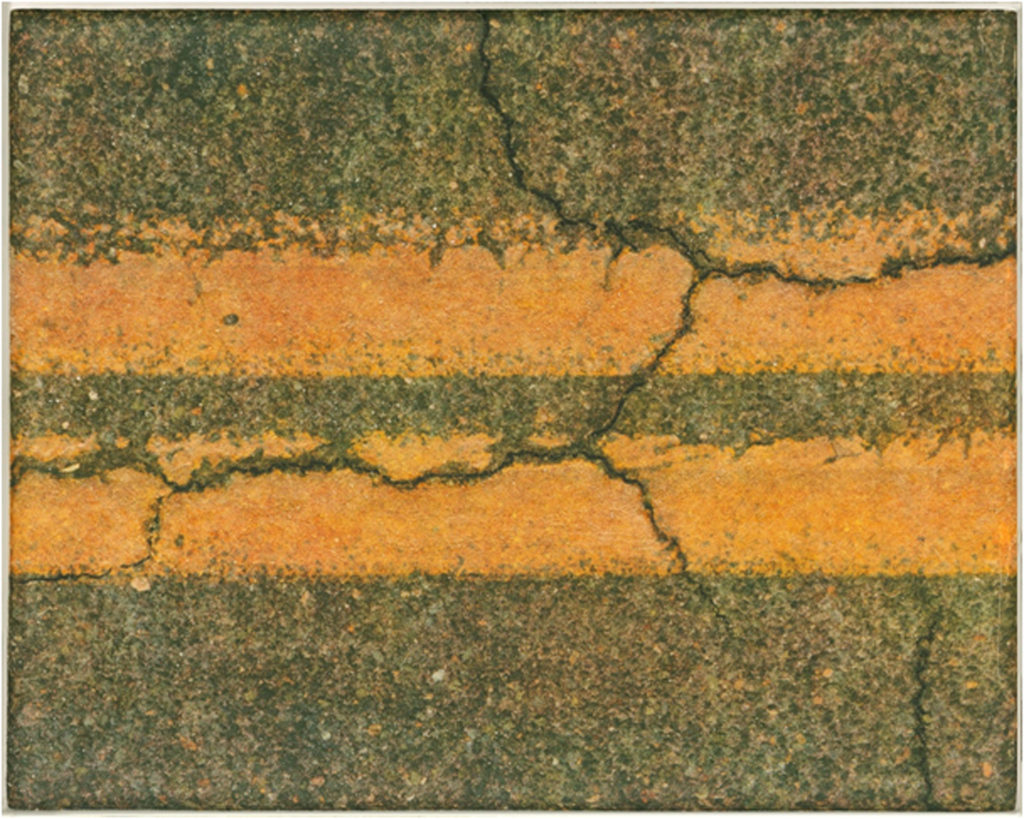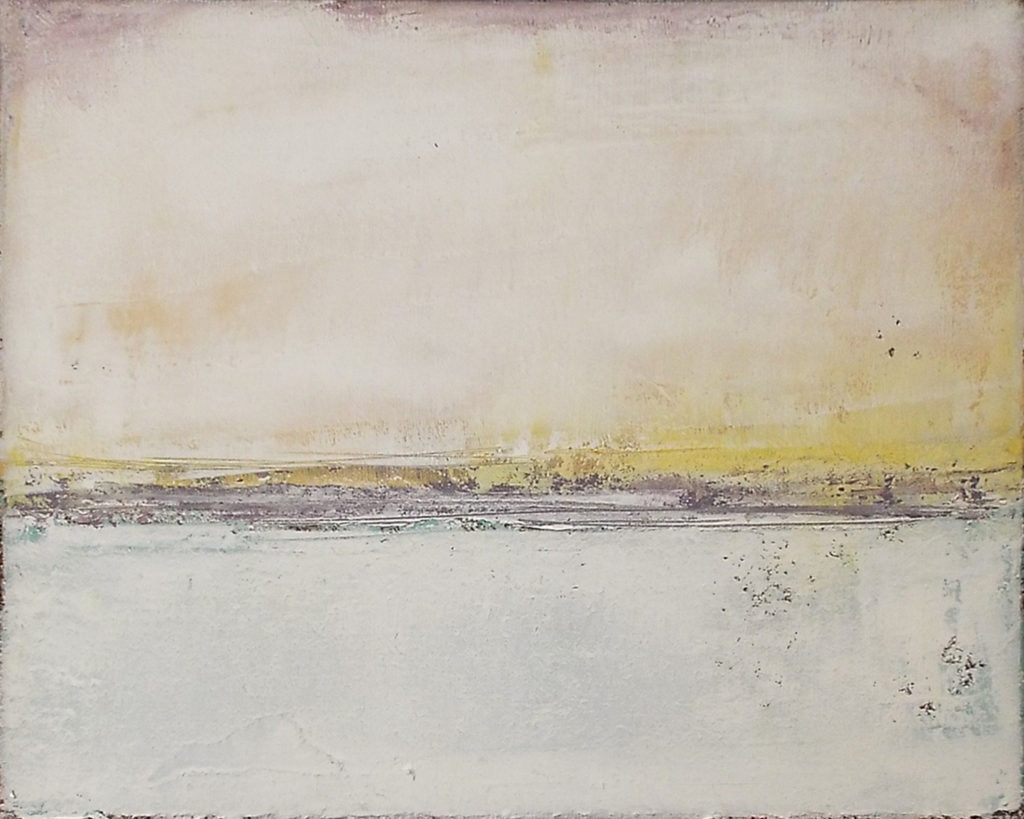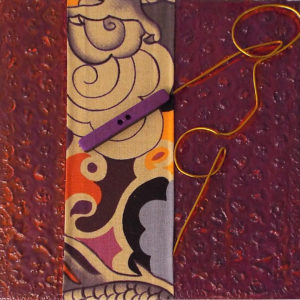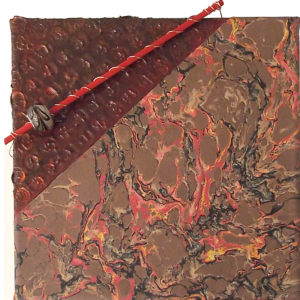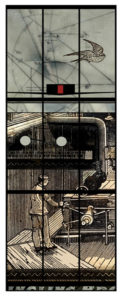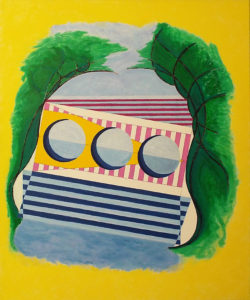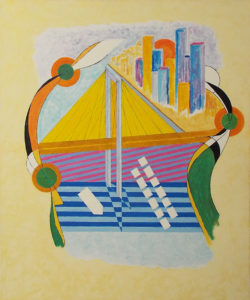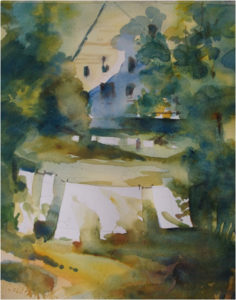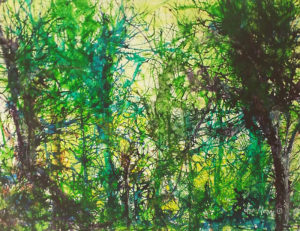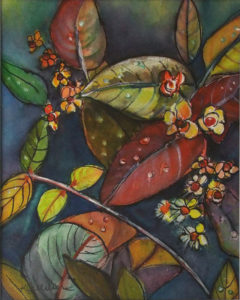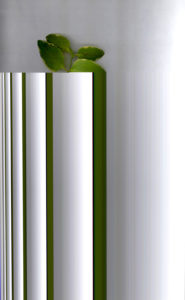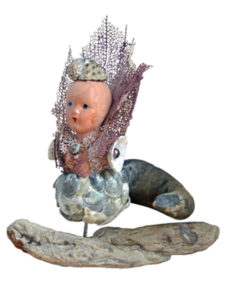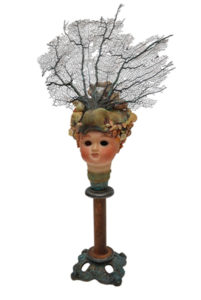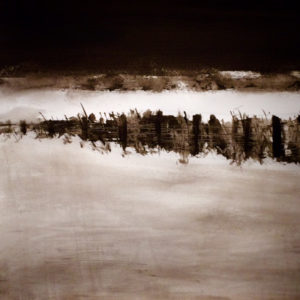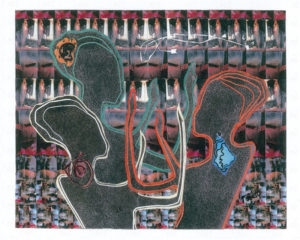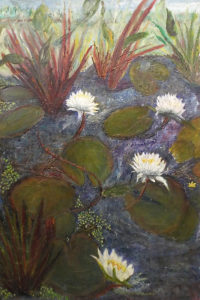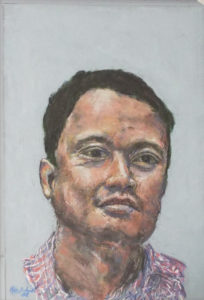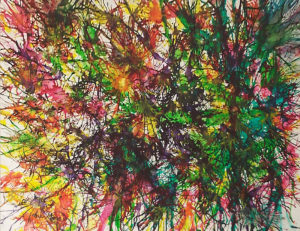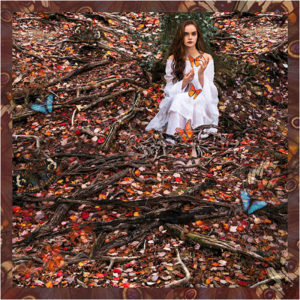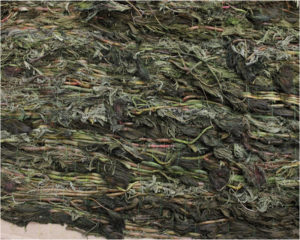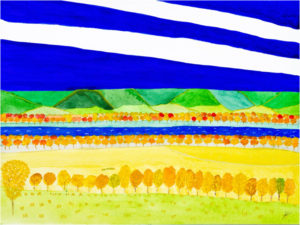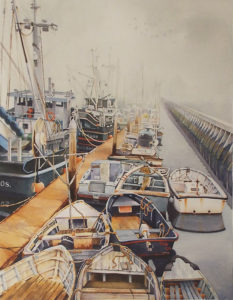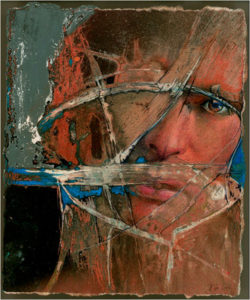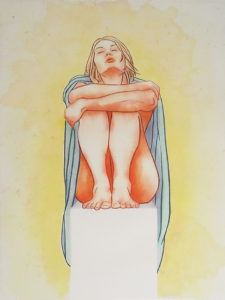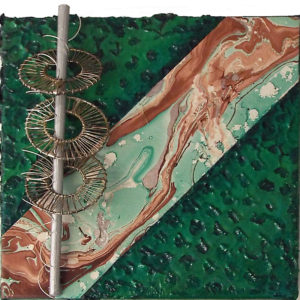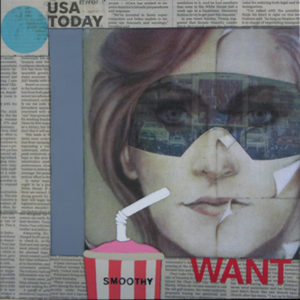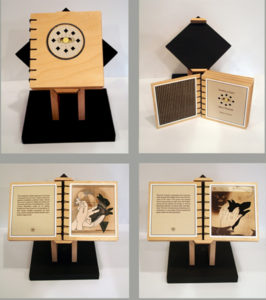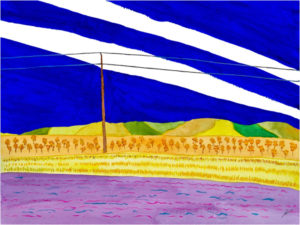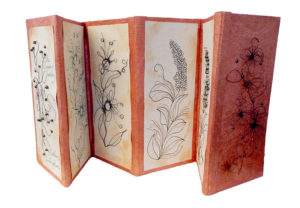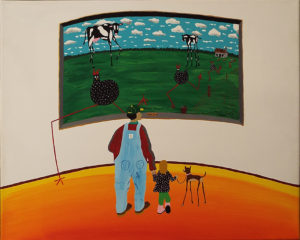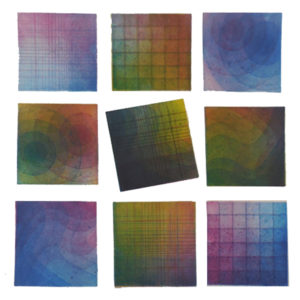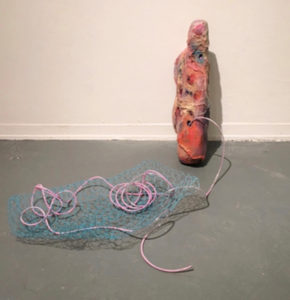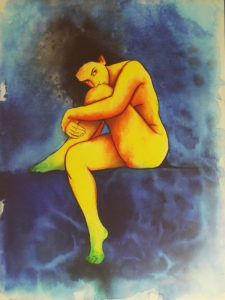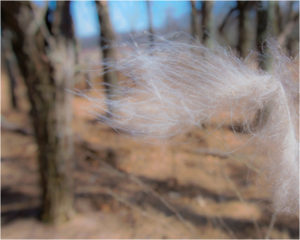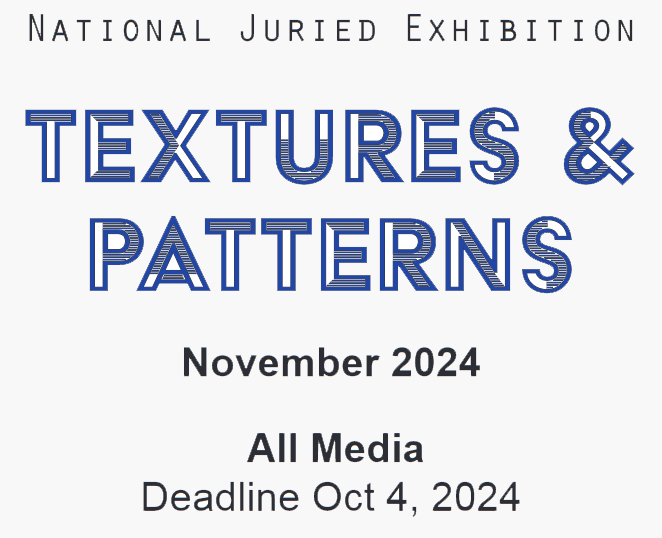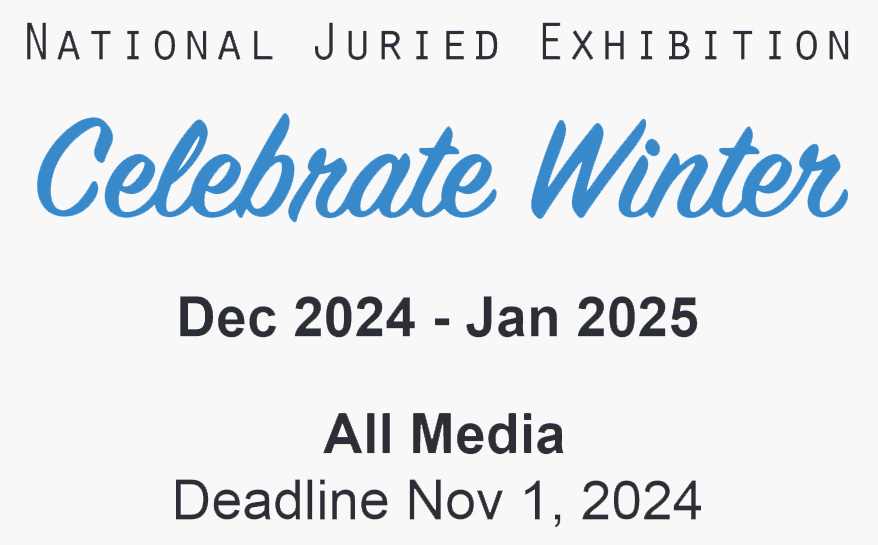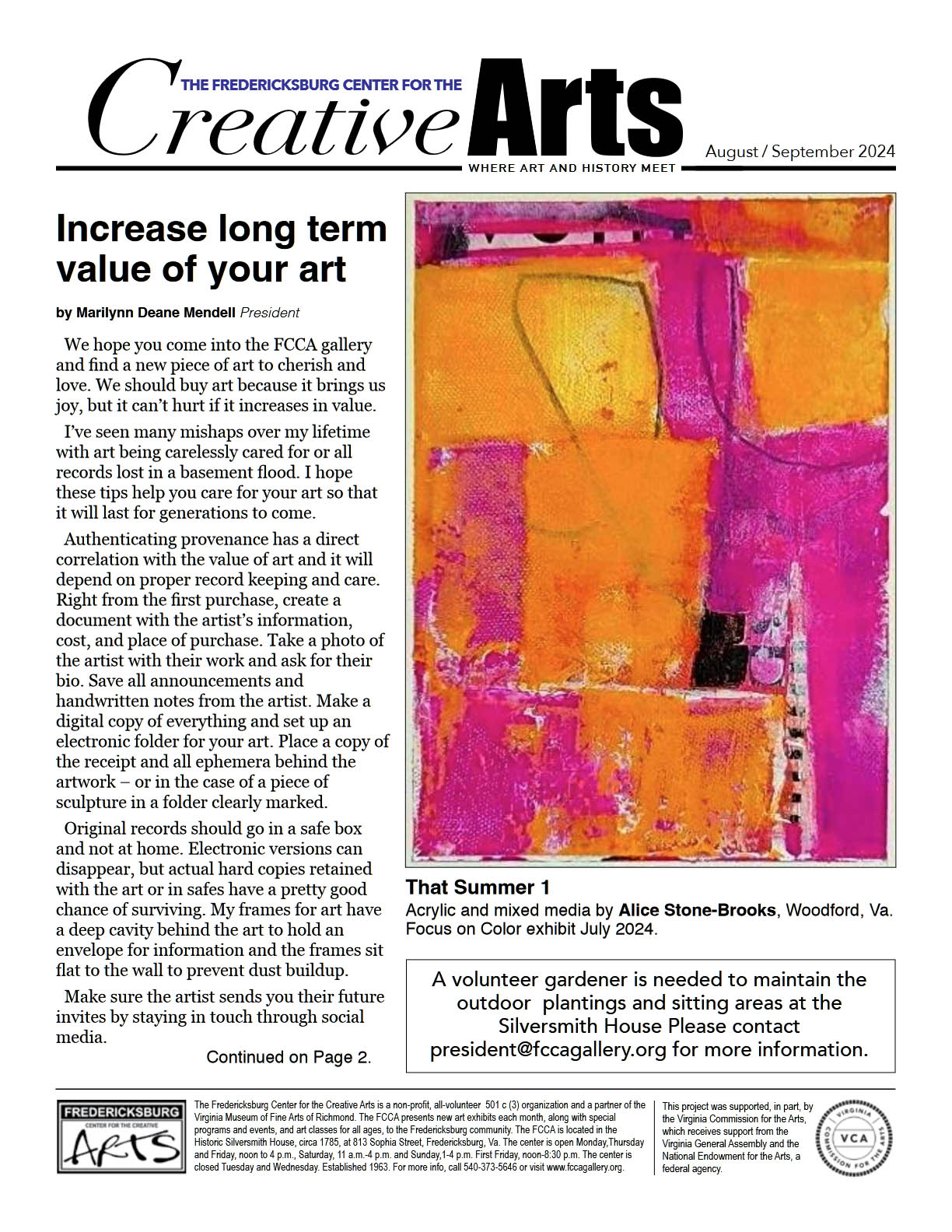A Fine Line
Juror: Reni Gower || Catalog || Flier
Awards:
- 1st Place – “Houses Walk the River Line” pulp painting by Jennifer Galvin of Fredericksburg, VA
- 2nd Place – “Anihinga Trail” oil painting by Nancy Wing of King George, VA
- 3rd Place – “Exposed” acrylic painting on board by Tarver Harris of Stafford, VA
Honorable Mentions
- “Letter Home” photograph by Rebecca Carpenter of Frederick, MD
- “OBX Pier” watercolor by Marcia Chaves of Fredericksburg, VA
- “Lines of Dots and Spaces” mixed media book by Ginna Cullen of Louisa, VA
- “Aposematic Fracture” mixed media painting by Jim Sconyers of Staunton, VA
- “Between the Lines” cold wax & oil painting by Bob Worthy of Montross, VA
Juror's Statement
When asked to be the juror for “A Fine Line”, I first envisioned an exhibition about drawing and printmaking. Instead, I was pleasantly surprised by an expansive interpretation of the theme executed in a variety of media. Ultimately, the works I chose range from painting to photography to mixed media to artists’ books. While there is no shared or overt commonality between the artworks, there are many ways in which “a fine line” is revealed.
The horizon line figures prominently in many of the works and as such the placement of the horizon line within the picture dramatically changes the viewer’s interpretation and response to the work. For example, the repetitious linear horizontality of Bro Halff’s Midwest landscapes effectively embodies the flat plains, broad skies, and warmth of late summer. Whereas, Bob Worthy’s minimal abstraction, beautifully captures the solitude of a winter landscape in just a few broad strokes of warm and cool tones in conversation across a central divide. In contrast, a dark menacing sky above a high horizon line, in Barbara Taylor Hall’s “Fenceline” emphasizes a stark brooding landscape in monochrome.
Likewise, in Nancy Wing’s water landscapes, the high horizon creates a ground level view and places the viewer squarely in the water. Mirroring our perception, this low perspective makes objects in the foreground appear bigger than the background. This point of view appeals to our eye because it is simultaneously familiar and unusual. This device is also used by Lizabeth Castellano-King. In her piece “Tied Lines”, she places the viewer below deck looking upwards through riggings and coils of ropes. Positioning the horizon slightly above the bow increases our sense of vertical depth and lateral distance. By placing the viewer underneath and removing the horizon line entirely, Marcia Chaves also incorporates a low point of view in “OBX Pier” to intensify the illusion of the pier’s height.
This sense of displacement and grand scale is also present in Ina Moss’ process based works in which the viewer appears to be looking up towards a brilliant light seen through a compressed tangle of an old-growth forest. While less spatial, a similar density is imbedded in several photographic works in this exhibition. Lee Cochrane’s “Winter Cypress” captures a delicate lacelike webbing of light reflecting off the twisted branches of a cypress thicket. Becki Heye’s “Whispers from Heaven” overlays an extreme close-up to create a soft screen that obscures the shallow distortion of a woodland landscape. Marin Abell’s “Milfoil-Woven Weed” goes even further into a flat pictorial abstraction that defies its representational origins.
Eliminating the horizon line completely also creates a more expansive topographical view. As such, Katherine Arens’ process based abstractions appear to be seen from above and from a far: maybe they are macro views of ocean currents, ice flows, or even oil spills. On the other hand, Jim Sconyer’s mixed media work “Aposematic Fracture” flips back to the micro with an up close view of gritty road stripes offset by organic expansion-cracks in asphalt. Carolyn Beever’s print is also a mysterious hybrid of the organic and the manmade. Jason Kelly blends the micro with the macro by layering references to both systems: digital dots and dashes of binary code with subcutaneous circulatory impressions.
Still in other works, a diagonal horizon line amplifies the sense of movement. While bringing to mind ancient cave drawings, Charlotte Richards’ rabbit in “Cutting Through the Mist”, appears to be scampering quickly downhill. The diagonal linear networks in Jurgen Brat’s bridge paintings both anchor and animate his landscapes. Using humor and exaggeration, Mark Prieto employs several horizon lines at once to link multiple representations of interior and exterior space in “A Thin Red Line”.
Whether describing figures, teacups, botanicals, or geometry, the contour line expressively delineates forms, subtly creates edges, and gesturally conveys movement. By circumnavigating the figure with a fine line, Minta Smith intensifies feelings of quiet isolation. In contrast, Bev Bley’s expressive outline of a Flamenco costume combined with angular gestures around the figure effectively capture the swirling but highly structured essence of the dance. Teresa Blatt’s mixed media collage “Kua” also references controlled movement through the title’s reference to one of the martial arts. Entwined figures, clapping hands, and concentric outlines layered over dense patterns escalate the sensation of spinning and staccato sound. Likewise by tilting a table top, Toni Scott’s teacups appear precariously balanced and about to topple with a clatter. On a calmer, less introspective note, both Kathleen Willingham and Karen Julihn use a lyrical line to capture the intricacy of nature in wire and ink respectively.
Visual stability is also achieve through a linear buttressing of color and shape. The universality of sacred geometry is beautifully revealed in Tarver Harris’ oscillating patterns built with the circle, square, triangle and hexagon. The simple shapes fashioned out of pulped paper in Jennifer Galvin’s “Houses Walk the River Line” convincingly suggest humble architectural structures despite the minimal detail, flatten space, and surface texture. While more referential still, Peggy Wickham uses the compulsive repetition of variably sized grids to simulate the steel skeleton of skyscrapers. Punctuated by intense color, she ably captures a dense and durable urban landscape at night. On the other hand, David Brosch destabilizes the grid in his 9 square etching through a slight 30º rotation of the central square. As such, the color and layered linear networks pulsate with visual fluctuations of sound.
Several works imply the fine line that divides the inner self from outward appearances. Despite our culture’s obsession on fictional personas, the figurative works here address pain and malaise rather than the false optimism of the selfie. Through peeling “skins”, Elvira Dimitrij reveals the futile search for eternal youth. Alan Rudnick’s portrait of Marc conveys a pensive uncertainty. Rebecca Carpenter’s photos embrace a dark sinister narrative of lost innocence and the viewer wonders if Paul Tebo’s figure is physically or psychologically bound or censored. Even Lacy Mitcham’s mixed media sculpture appears diseased and beyond recovery despite a medical intervention or transfusion.
Lastly, a fine line is revealed between multiple works by the same artist. The 4 mixed media works by Katharine Owens are intimately related through surface texture, color, and the 3-dimensional portrayal of line created through twisted wire. Robert Hunter’s book and print employ of more schematic approach to line while weaving intimate narratives through depiction and diagrams. Crafted from recycled materials, Tara Shimbert’s chimeras cross a line that is both creepy and playful. By assuming many forms, the sculptural book by Ginna Cullen creates an interactive contour that invites the viewer to read beyond the form, lines, and dots.
While many of these works could have been grouped and discussed differently, others are relative outliers. In any case, I believe it is always best to view works on their unique merits. Overall, I was drawn to works that combine ideas and methods in unusual ways. Whether literally or abstractly, I ultimately chose pieces that revealed “a fine line” through their form and content. Congratulations. It was a pleasure to jury the exhibition and to be introduced to your work.

